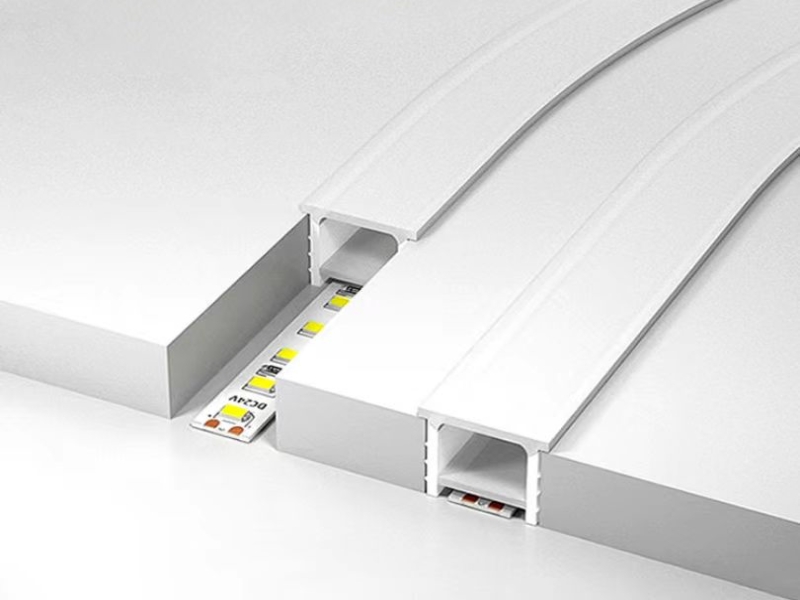Introduce:
Choosing the right LED profile LED strip track for your lighting project is crucial, especially when considering factors such as weather resistance. In this comprehensive guide, we’ll explore key aspects to help you identify whether an LED strip is waterproof. From understanding IP ratings to inspecting construction materials, we’ll delve into the details to ensure your LED profiles are suitable for a variety of environmental conditions.
Learn about IP ratings:
The first step in determining whether an LED profile is waterproof is to check its ingress protection (IP) rating. The IP rating consists of two digits indicating the level of protection against solids and liquids. For waterproofing applications, focus on the second number:
IPX4 and IPX5:
LED profiles with these ratings protect against water splash from any direction. They are suitable for indoor applications but may not be completely sealed against heavy rain or flooding.
IPX6 and IPX7:
Profiles with these ratings provide protection against powerful water jets and temporary immersion. They are suitable for outdoor applications where exposure to rain is expected.
IPX8:
IPX8 rated LED profiles are fully immersible in water, making them ideal for applications requiring continuous immersion in water.
Check building materials:
Aluminum profile:
Choose LED profiles made of corrosion-resistant aluminum. Anodized or powder coated finishes add an extra layer of protection against the elements.
Sealing mechanism:
Waterproof LED strip channel usually have effective sealing mechanisms such as silicone gaskets or seals. Check these elements in the profile design to ensure proper protection is provided.
End Caps and Connectors:
Waterproof LED light profile should have secure and sealed end caps and connectors. These components play a vital role in preventing water intrusion, especially in outdoor installations.
water-proof test:
Now I would like to recommend a waterproof and flexible LED profile called M16-16 to you. I hope it will be helpful to you.

“Flexible silicone profiles” usually refer to profiles made of silicone that are flexible and elastic. Here are some of the main features of this material:
Flexibility: Soft silicone profiles have good flexibility and can adapt to different shapes and curves, making them very practical in applications that require bending or bending.
Elasticity: The silicone material itself has excellent elasticity, can return to its original shape, and is not easily deformed. This allows soft silicone profiles to recover quickly after being stressed, improving the material’s durability.
Waterproof: Silicone material has good waterproof properties, does not absorb water, and is not susceptible to moisture. This makes soft silicone profiles excellent in humid environments or where a waterproof design is required.
High and low temperature resistance: Silicone profiles have high temperature resistance and can maintain stability over a wide temperature range. It can be used in extremely cold or hot environments without failure.
Beautiful appearance: The soft silicone layer can provide a wide range of color options and has a smooth and modern appearance, making this material very popular in occasions with high design requirements.
In general, soft silicone profiles are widely used in lighting, home decoration and other fields due to their multiple superior properties.
In conclusion:
Identifying whether an LED light strip is waterproof requires a comprehensive evaluation of its IP rating, construction materials, testing certifications, and user feedback. By paying careful attention to these factors and considering the installation environment, you can confidently choose an LED strip profile that meets the waterproofing requirements of your lighting project.












Leave A Comment